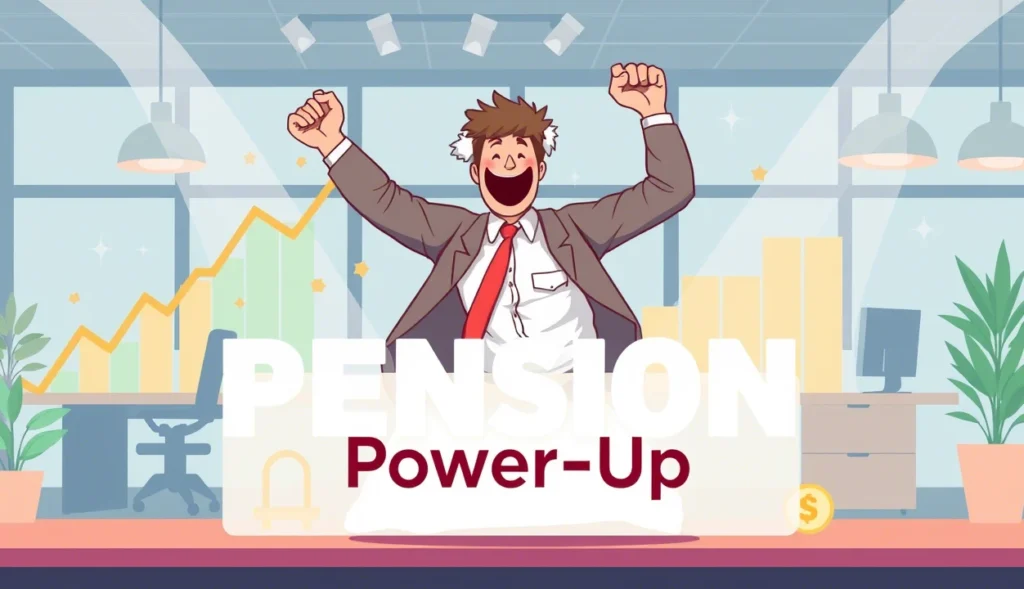A Retirement Revolution
Picture this: you’re slogging away at your desk, watching a chunk of your salary vanish into your Provident Fund (PF) every month, wondering if it’ll ever make a difference. Well, hold onto your coffee mug, because the Indian government just dropped a bombshell that could transform your retirement. Word from the top is that pensions for private sector workers might soon triple, jumping from a measly ₹1,000 a month to a much heartier ₹3,000. If your PF gets deducted, this is your ticket to a cushier future. Why’s this such a big deal? Let’s break it down like we’re chatting over some chai and samosas.
The Pension Promise
The buzz comes straight from a senior government official, who spilled the tea to News18 Punjabi. The Employee Pension Scheme (EPS), run by the Employees’ Provident Fund Organisation (EPFO), is about to get a major glow-up. Right now, if you’re in the private sector, your employer chips in 12% of your salary to your PF. Of that, 8.33% goes to the EPS to fund your pension, while the rest beefs up your PF savings. When you retire, that EPS portion turns into a monthly pension—currently starting at ₹1,000 for most. But soon, that could skyrocket to ₹3,000, giving retirees a real shot at financial security. The plan’s in the works, and we could see it roll out in just a few months.
Why It Hits Home
Let’s get real: ₹1,000 a month doesn’t cut it anymore. With inflation soaring—retail prices have jumped 72% in the last 11 years—that amount barely covers a week’s groceries. For the 36.6 lakh EPS pensioners scraping by on this minimum, life’s been tough. Tripling the pension to ₹3,000 is like throwing a lifeline to millions of retirees. Imagine being able to pay your bills, buy medicines, or even treat your grandkids to ice cream without sweating your bank balance. For private sector workers—everyone from IT coders to factory hands—this is a signal that the government’s finally listening.
The Bigger Picture
This isn’t just about fatter pensions; it’s about dignity. The EPS, part of the EPFO’s massive ₹8 lakh crore corpus, supports 78.5 lakh pensioners. But for years, workers have grumbled that the payouts are too low to live on. Back in 2020, the Labour Ministry pushed to raise the minimum pension to ₹2,000, but the Finance Ministry shot it down, citing budget constraints. More recently, EPS retirees begged Finance Minister Nirmala Sitharaman to hike it to ₹7,500 before Budget 2025, but got no promises. Now, the ₹3,000 target feels like a hard-won compromise—a step toward making retirement less of a struggle.
How It Works
Curious about the nuts and bolts? Every month, your employer’s 12% PF contribution splits: 8.33% fuels your EPS pension, and 3.67% grows your PF savings. Your own 12% salary deduction goes straight to your PF. When you retire, the EPS kicks in with a monthly pension based on your service years and contributions. The current ₹1,000 minimum has been a sore point, but bumping it to ₹3,000 could change lives. The catch? Tripling pensions means tripling costs. In 2023-24, the Labour Ministry spent ₹1,223 crore on EPS pensions, up 26% from ₹970 crore the year before. Scaling up will strain the budget, but officials are confident they can make it work.
The Fight for More
This plan didn’t come easy. EPS pensioners have been shouting from the rooftops for years, demanding a pension that keeps up with inflation. Their ₹7,500 dream might not have landed, but ₹3,000 is a solid win. It’s also a nod to the private sector’s backbone—millions of workers who keep India’s economy humming. From Bengaluru’s tech hubs to Punjab’s factories, these folks deserve a retirement that doesn’t feel like a downgrade. The government’s finally waking up to that, especially with elections looming and workers’ voices growing louder.
Challenges Ahead
Nothing’s set in stone yet. The government’s got to crunch numbers and find the cash to fund this jump. Some worry it could stretch the EPFO’s resources thin or lead to tweaks in PF contributions, which might pinch current salaries. Plus, the ₹7,500 demand still lingers—pensioners aren’t done fighting. But the mood’s hopeful. If the plan goes through, it’ll be a massive relief for retirees staring down rising costs. And with Budget 2025 around the corner, all eyes are on whether the government sticks to its guns.
Why You Should Care
This isn’t just for old-timers dreaming of retirement. If you’re a private sector worker with PF deductions, this is your future we’re talking about. A beefier pension means less stress when you hang up your work boots. It’s also a sign the government’s thinking about the little guy—not just corporate bigwigs or sarkari babus. For families, it means parents and grandparents might lean on you less, freeing up your savings for your own dreams. And let’s be honest: knowing your hard-earned PF money’s building a solid retirement feels pretty darn good.
A Brighter Tomorrow
Here’s the deal: tripling EPS pensions could be a game-changer for India’s private sector workers. It’s not just about extra cash—it’s about respect, security, and a retirement you can actually enjoy. Whether you’re punching the clock in an office or on a factory floor, this news is a ray of hope. The road ahead might have bumps, but for now, let’s raise a glass to a future where your PF packs a bigger punch. Who’s ready for a happier retirement?



